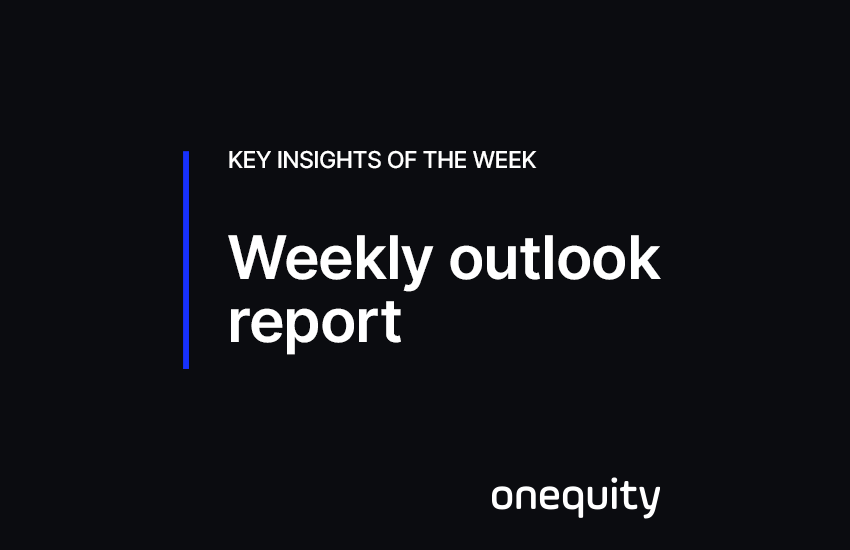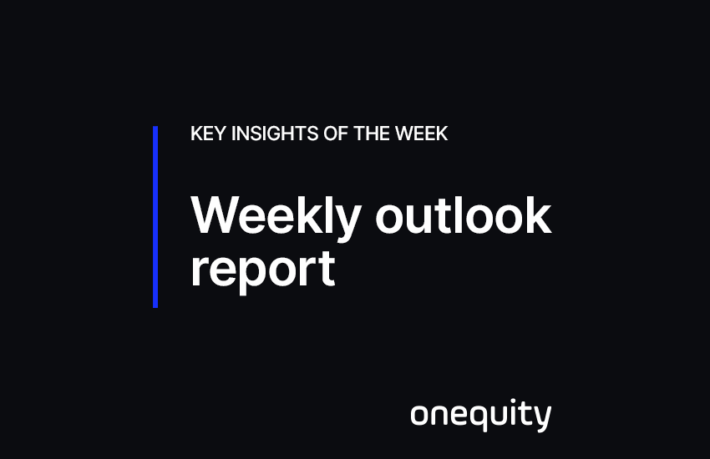Weekly Market Outlook | 25-29 Aug

The week of August 25–29 will be pivotal for global markets, with investors closely watching U.S. GDP and PCE inflation data as expectations for Fed rate cuts adjust following stronger dollar momentum and Powell’s Jackson Hole remarks. In Europe, preliminary CPI figures from Italy, France, and Germany will help shape the ECB’s policy outlook, while in Asia, Tokyo CPI results could bolster prospects of a Bank of Japan hike before year-end. Meanwhile, Canada’s GDP report will be key for the loonie as markets reassess the likelihood of Bank of Canada easing. With inflation and growth data in focus across major economies, the week carries significant potential for market-moving developments.
Key Points to Watch Out For:
- Accelerating U.S. PCE could weigh on Fed rate cut expectations
- Euro traders focus on CPI data from Italy, France, and Germany
- Tokyo CPI results may influence BoJ hike prospects by year-end
- Canadian dollar awaits GDP data for direction
Dollar Gains on Revised Fed Rate Cut Outlook
The U.S. dollar appreciated this week as investors reduced their expectations of aggressive rate cuts by the Federal Reserve. Following the disappointing July non-farm payrolls report, the weak ISM non-manufacturing PMI index, and the introduction of reciprocal tariffs by Trump, speculation intensified about an acceleration of rate cuts. Markets had fully priced in a 25 bps cut in September, another one later, and up to a 30% chance of a third reduction before the end of the year.
Although July CPI data showed little sign of tariff-related inflation, producer prices rose sharply, reinforcing Fed Chair Jerome Powell’s view that tariffs would push inflation higher over the summer. Along with strong preliminary PMI data from S&P Global for August, investors adjusted their expectations and now assign a 70% probability to a September cut, while reducing their bets on subsequent cuts.
Focus on GDP and PCE Data
Fed Chair Powell is scheduled to speak today at the Jackson Hole Economic Symposium, and markets are positioning themselves for a potentially hawkish tone. The strength of the dollar and the pullback in Wall Street highlight these expectations.
Markets will focus on U.S. data this week, including the second estimate of second-quarter GDP and the July PCE inflation report. The first estimate of GDP stood at 3.0% quarter-on-quarter SAAR, while the Atlanta Fed’s GDPNow model points to 2.3%. Any confirmation of resilience could strengthen the case for caution when it comes to lowering rates, despite political pressure from President Trump.
On inflation, the Fed’s preferred indicator, core PCE has historically shown a strong correlation with core CPI. With core CPI accelerating to 3.1% year-on-year in July, the risks for the core PCE index are tilted to the upside. Evidence of persistent inflation would likely further reduce market expectations for further rate cuts this year, which would support the strength of the dollar and weigh on equities, particularly high-growth sectors sensitive to discount rates.
Eurozone CPI Data Could Influence the ECB’s Outlook
In Europe, attention is focused on preliminary August CPI data from Italy, France, and Germany, due on Friday, August 29. At its last meeting, the ECB kept rates unchanged, while President Lagarde’s unexpectedly hawkish comments, coupled with the EU–U.S. trade deal, fueled expectations of a prolonged pause in monetary policy adjustments.
Better-than-expected second-quarter GDP, a core CPI rate still above target, and improved preliminary August PMIs have reinforced the view that limited easing is needed. Markets are currently only pricing in a 10 bps rate cut by the end of the year, equivalent to a 45% probability of a quarter-point cut in December. Further out, expectations for another cut by mid-2026 stand at 72%.
If upcoming inflation data point to persistent price stickiness, markets could reduce the likelihood of further cuts, allowing the euro to strengthen if growth data also remain favorable.
Tokyo CPI in Focus as BoJ Hike Bets Rise
In Japan, investors will be watching August Tokyo CPI figures, along with unemployment, industrial production, and retail sales data.
Last week, a former foreign minister, considered a possible future prime minister, argued that Japan should raise interest rates to stabilize the yen and ease inflationary pressures on households. This statement increased the probability of a rate hike by the Bank of Japan before the end of the year to 70%. A solid CPI in Tokyo and favorable macroeconomic data could further increase that probability, which could strengthen the yen.
Conclusion: Global Markets Brace for Data-Driven Shifts
The week ahead is defined by high-impact data across major economies, each with potential to reset policy expectations and market tone. In the U.S., GDP and core PCE will be pivotal for recalibrating Fed rate-cut odds; in Europe, preliminary CPI from Italy, France, and Germany will guide the ECB’s near-term stance; in Japan, Tokyo CPI could lift the probability of a BoJ hike; and in Canada, Q2 GDP will shape the path for BoC easing and the loonie. Against this backdrop of inflation, growth, and trade dynamics, positioning and risk management should remain highly disciplined.
For real-time insights and institutional-grade analysis, visit the OnEquity New Website and explore our client feedback on Trustpilot


